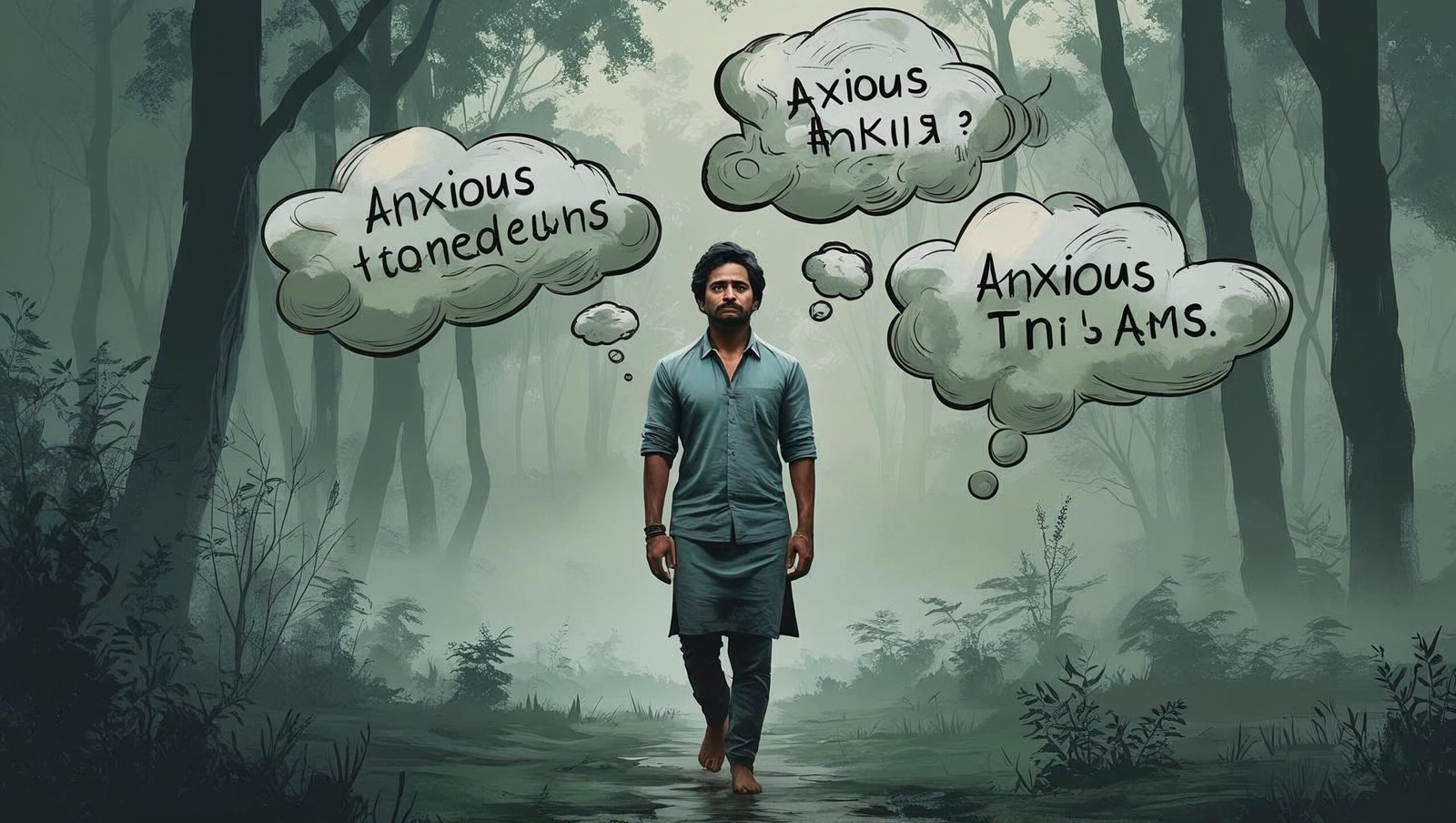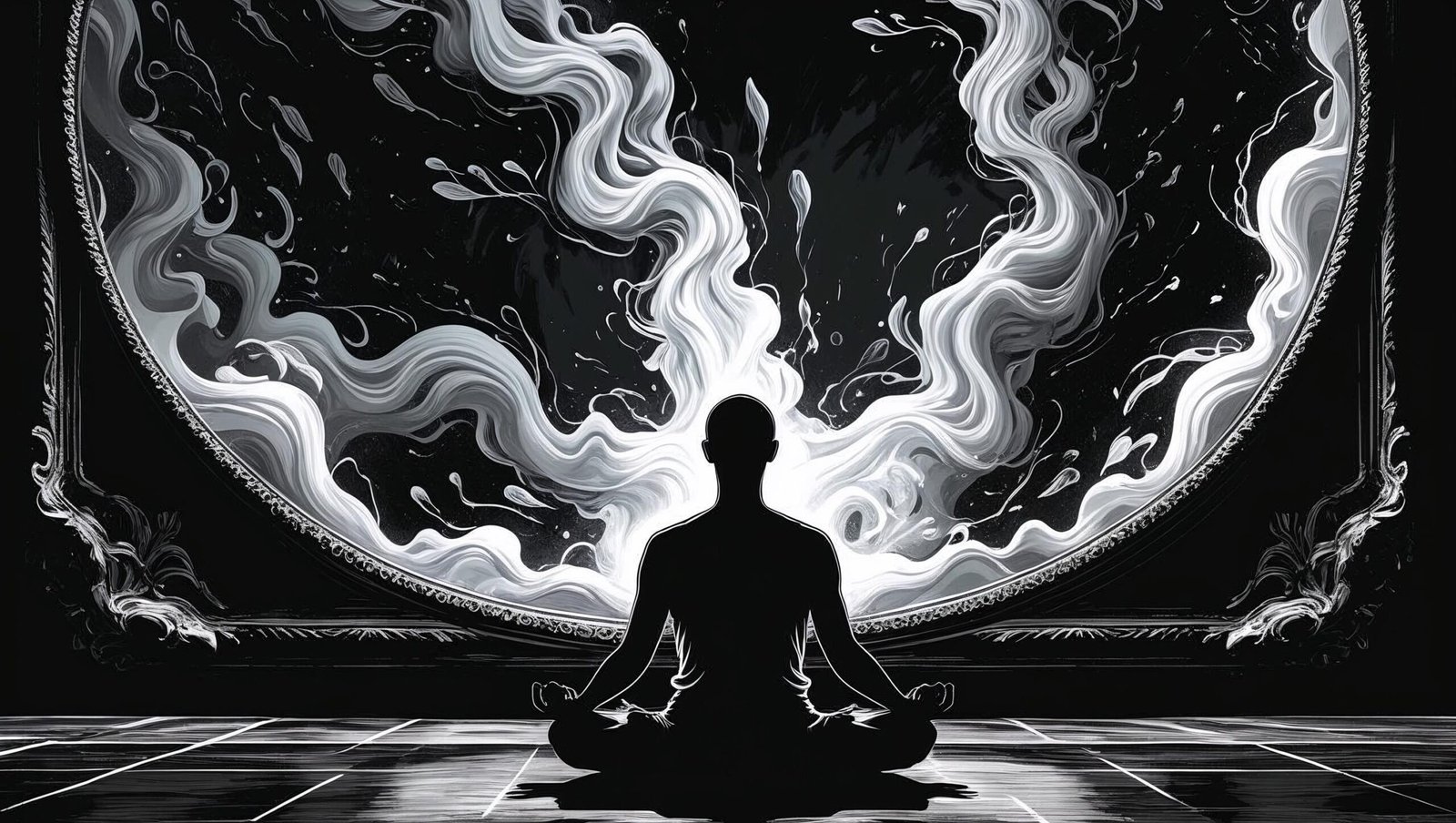Introduction
Don’t Believe Everything You Think is a profound and empowering book that challenges one of the most entrenched assumptions in human psychology—that our thoughts reflect reality. Written by Joseph Nguyen, the book sheds light on the inner workings of the mind and teaches how liberating it is to detach from compulsive thinking.
Through a combination of spiritual wisdom and psychological insight, Don’t Believe Everything You Think reveals that most of our suffering stems not from the world but from the way we think about the world. This review presents seven life-changing lessons from the book that can shift your mental paradigm and help you find lasting peace.

Lesson 1: Suffering Is the Result of Thought
The first major idea in Don’t Believe Everything You Think is both simple and revolutionary: suffering is created by our thoughts, not external circumstances. Nguyen explains that the way we interpret events causes pain—not the events themselves.
He encourages readers to observe their thoughts with detachment. Instead of reacting automatically, we must ask, “Is this thought even true?” This single question, emphasized in Don’t Believe Everything You Think, can unravel the web of mental stories that lead to anxiety, guilt, and fear.
Lesson 2: You Are the Awareness Behind the Thought
In Don’t Believe Everything You Think, Joseph Nguyen makes a clear distinction between who you think you are and who you truly are. He reveals that the real “you” is not your thoughts or emotions, but the awareness behind them.
This teaching has roots in ancient spiritual traditions and is now supported by modern mindfulness practices. Once you realize you are the observer of thoughts—not their victim—you begin to live from a space of clarity and peace.
As Don’t Believe Everything You Think explains, thoughts come and go like clouds, but your awareness remains constant and undisturbed.
Lesson 3: You Don’t Need to Control the Mind
Our culture glorifies control—especially over the mind. But Don’t Believe Everything You Think turns this notion on its head. Nguyen argues that trying to control the mind only adds more mental noise.
Instead, he recommends allowing thoughts to come and go without judgment. When we stop trying to manage, suppress, or fight our thinking, the mind naturally settles. The wisdom of Don’t Believe Everything You Think lies in this radical acceptance—peace comes not through effort, but through surrender.
Lesson 4: There Is Nothing Wrong With You
One of the most healing messages from Don’t Believe Everything You Think is that you are not broken. Nguyen reassures readers that our sense of unworthiness is a result of believing negative thoughts—not an objective truth.
Many people carry the subconscious belief that something is fundamentally wrong with them. Don’t Believe Everything You Think dismantles this illusion. Beneath all fear, pain, and conditioning lies a pure, untouched self that is inherently whole.
Lesson 5: Emotions Are Born from Thoughts
Nguyen explains in Don’t Believe Everything You Think that emotions are not autonomous—they are the result of thoughts. For example, anxiety doesn’t come from the future—it comes from a thought about the future.
Once you understand this, your emotions become more manageable. Instead of being swept away by sadness, fear, or anger, you begin to trace them back to their root thought. Don’t Believe Everything You Think teaches how awareness of thought leads to emotional freedom.

Lesson 6: Peace Is Already Within You
In Don’t Believe Everything You Think, Nguyen insists that peace is our natural state. We don’t have to find it—we simply have to stop disturbing it. Thoughts, judgments, and mental narratives obscure the peace that is always present.
When we stop clinging to thoughts and let go of our mental identities, we return to a state of serenity. Don’t Believe Everything You Think helps readers connect with this timeless inner stillness, which exists beneath the noise of the mind.
Lesson 7: Negative Beliefs Can Be Released
The final insight from Don’t Believe Everything You Think is that limiting beliefs are not permanent. They are learned—and they can be unlearned. Nguyen shows how to gently dissolve these beliefs through awareness and inquiry.
If you consistently question negative thoughts—“Am I really not good enough? Is this true?”—they begin to lose power. This process of conscious inquiry is one of the most powerful teachings in Don’t Believe Everything You Think.
Expanding the Wisdom: A Closer Look at the Psychology of Thought
To truly grasp the revolutionary nature of this book, it is essential to understand the foundational structure of thought. Most people operate under the belief that the mind is an accurate interpreter of reality. Yet countless psychological studies demonstrate that human cognition is highly susceptible to biases, distortions, and assumptions. These distortions range from confirmation bias to catastrophizing, from all-or-nothing thinking to personalization. The mind does not merely reflect reality—it actively constructs it.
This is where cognitive-behavioral therapy (CBT) and mindfulness-based cognitive therapy (MBCT) align with the author’s core message. Both modalities teach that thoughts are not facts. While the former provides tools to restructure thinking patterns, the latter encourages non-judgmental observation. Both approaches affirm that inner peace is not found in chasing positive thoughts but in releasing attachment to mental narratives altogether.
Philosophical and Spiritual Parallels
The book’s thesis resonates strongly with ancient philosophical and spiritual traditions. In Advaita Vedanta, the concept of Maya describes the illusory nature of perception. In Buddhism, the doctrine of Anatta (non-self) posits that the self is a construct—a temporary aggregation of mental and physical components. Similarly, Zen teachings often revolve around recognizing the futility of thought-based identification and cultivating zazen or seated awareness.
Even Western philosophy, particularly the writings of Epictetus and Marcus Aurelius, echoes these sentiments. Stoicism teaches that it is not events themselves that disturb people but their interpretations of them. In modern times, authors such as Eckhart Tolle, Byron Katie, and Michael A. Singer have emphasized awareness as the gateway to liberation from internal chaos. This book stands firmly within this wisdom lineage, offering a contemporary, accessible interpretation for today’s readers.
Personal Transformation and Self-Discovery
The implications of this message are profound. If one internalizes the notion that mental activity is not synonymous with truth, then life becomes considerably lighter. Reactions soften, compulsions weaken, and the incessant inner critic begins to lose credibility. People become more grounded, more present, and more at ease with themselves and others.
For instance, imagine someone who constantly struggles with low self-worth. They may interpret every awkward moment as proof of inadequacy. But what if those conclusions were not accurate? What if those assumptions were simply habitual thought loops inherited from past experiences? That subtle shift—from believing to observing—can dismantle years of unnecessary suffering.
Moreover, the book encourages a sort of inner experimentation. Readers are not told to blindly adopt a belief but to directly inquire into their lived experience. This approach aligns with the scientific method—hypothesis, observation, and analysis—not as a rigid framework but as a flexible lens to view one’s inner world.

Practical Daily Applications
What makes the teachings here uniquely impactful is their applicability to everyday scenarios. Here are some examples:
-
Conflict Resolution: When faced with interpersonal conflict, it becomes easier to separate what was said from the emotional story attached to it. Instead of spiraling into resentment, one can observe the story and let it pass.
-
Decision-Making: People often overthink decisions, fearing the consequences of making the wrong choice. But in truth, over-analysis rarely leads to clarity—it only breeds confusion. Through self-awareness, clarity arises organically.
-
Creativity and Work: Many professionals suffer from imposter syndrome or creative block. These are often the result of internal monologues that question worthiness. When those narratives are not engaged with, creative energy flows naturally.
-
Parenting and Relationships: Emotional triggers in close relationships often arise from unresolved narratives. When one learns to step back from their emotional storylines, communication becomes clearer, and empathy increases.
-
Mental Health Management: Although not a replacement for therapy or medication, these teachings can serve as a complementary tool. Recognizing that many emotional states are rooted in transient mental activity helps reduce identification with anxiety, depression, and obsessive thought.
Comparing with Other Works in the Genre
While this book is succinct and profound, readers may find value in exploring adjacent literature that expands on similar themes. For instance:
-
“The Untethered Soul” by Michael A. Singer explains how the voice in our head can be transcended through awareness.
-
“Loving What Is” by Byron Katie offers a structured method of inquiry to challenge painful beliefs.
-
“Radical Acceptance” by Tara Brach integrates mindfulness and compassion to heal shame and self-judgment.
-
“The Power of Now” by Eckhart Tolle remains a seminal text on awakening from compulsive thinking.
Each of these works complements the ideas presented here. They all invite the reader into deeper self-inquiry and illustrate how liberation is not found in external conditions but in inner stillness.
Critique and Cautions
While the book is remarkably clear, it is also abstract in certain sections. Some readers who are in acute distress may find it difficult to implement such subtle practices. For them, grounding exercises, therapy, or structured support might be needed as a parallel approach.
Additionally, individuals who misinterpret the core teachings might swing toward avoidance or spiritual bypassing. Simply dismissing every thought as unreal without emotional processing can become another form of repression. True healing includes the acknowledgment of pain, not its denial.
Therefore, a balanced reading of this book must include both inquiry and compassion. Awareness without judgment—not dissociation—is the key.
Real-Life Testimonials and Anecdotes
Since its release, the book has received praise from readers across the globe. Online communities are replete with stories of transformation. One reader, a veteran dealing with PTSD, shared how detaching from mental images of the past brought a sense of calm he hadn’t felt in years. Another, a corporate professional, explained how pausing before reacting in meetings saved her from workplace burnout.
There’s a certain universality in these teachings. Whether one is facing financial anxiety, relationship turmoil, or existential dread, the principle remains consistent: when thoughts are seen clearly, their grip weakens. This inner shift doesn’t require a new job, a new relationship, or a new city—it simply requires presence.

An Invitation to Inner Stillness
In the end, the book is less of an intellectual exercise and more of an invitation. An invitation to stop fighting the mind. To cease chasing an imagined future or dwelling in a distorted past. To sit quietly, watch the waves of consciousness rise and fall, and remember that beyond it all lies a spacious stillness that asks for nothing, needs nothing, and simply is.
This stillness is not about tuning out the world. It is about tuning in to a deeper reality—a place where clarity replaces confusion, and love replaces fear. It is this essence that gives the book its soul.
Suggestions for Integration
If you are serious about integrating the principles from this book into your daily life, consider the following practices:
-
Mindful Journaling: Write down recurring thoughts and identify the patterns. Ask, “Is this thought helping or harming?”
-
Daily Silence: Spend 10–15 minutes every morning sitting in silence. Observe without interfering.
-
Mental Labels: When a difficult emotion arises, label it gently—“sadness,” “fear,” “judgment”—and let it pass like a cloud.
-
Thought Challenges: If a belief seems fixed (“I’m not good enough”), try identifying three pieces of evidence that contradict it.
-
Gratitude Reflections: End your day by writing down three moments that brought stillness or clarity, no matter how small.
Over time, these small acts build an inner resilience. The world may not change—but your relationship with it will.
Final Words Before the End
There is an elegant simplicity in the book’s message. In a world overflowing with information, techniques, and intellectual clutter, this is a return to essence. It reminds us that we don’t have to be trapped in mental storms. There is always another way—one that doesn’t involve more doing, but rather more being.
For those who are open to looking within, the journey this book offers is both profound and permanent. One does not return from such an inner quest unchanged. The shift is quiet, yet unmistakable. Like the sun slowly emerging from behind the clouds, it illuminates everything with clarity, warmth, and grace.
What Makes This Book Unique
While many self-help books promise change through strategies, routines, or mental rewiring, Don’t Believe Everything You Think offers something deeper: a return to the essence of who we are beyond thought.
The writing is elegant, minimalist, and profound. Every page in Don’t Believe Everything You Think invites the reader to pause, reflect, and awaken to a more spacious state of being.
This is not just a guidebook for the mind—it’s a map back to the heart.

Who Should Read Don’t Believe Everything You Think
This book is ideal for:
-
People struggling with anxiety or overthinking
-
Individuals seeking peace through mindfulness or spirituality
-
Those who feel overwhelmed by negative self-talk
-
Readers tired of conventional self-help frameworks
-
Anyone yearning for a deeper, more peaceful way of being
If you resonate with any of the above, Don’t Believe Everything You Think will speak directly to your soul.
Benefits of Applying the Book’s Teachings
Here’s how reading and applying Don’t Believe Everything You Think can benefit your life:
-
Cultivate inner peace regardless of circumstances
-
Overcome self-judgment and shame
-
Improve mental clarity and emotional regulation
-
Develop mindfulness and detachment from thought
-
Restore a sense of spiritual connection and wholeness
The results are not theoretical—they are experiential. Many readers report real transformation after deeply engaging with the teachings of Don’t Believe Everything You Think.
Frequently Asked Questions (FAQs)
Q1: What is the core idea behind Don’t Believe Everything You Think?
A: The central idea is that most of our suffering is created by thought. If we stop identifying with thoughts, we return to our natural state of peace.
Q2: Is this book easy to read?
A: Yes. Don’t Believe Everything You Think is written in simple, accessible language with short chapters that are easy to reflect on.
Q3: Is the book spiritual or psychological?
A: It blends both. While rooted in non-dual spirituality, the book speaks clearly to psychological struggles like anxiety, self-doubt, and overthinking.
Q4: Can this book help with depression or low self-worth?
A: Yes. Many readers say that Don’t Believe Everything You Think helped them overcome years of emotional pain by shifting their perspective on thought.
Q5: Where can I buy the book?
A: Don’t Believe Everything You Think is available on Amazon, Flipkart, and other major bookstores.
Conclusion
Don’t Believe Everything You Think by Joseph Nguyen is a spiritual compass in a mentally noisy world. It delivers the gentle, yet radical, message that we don’t need to heal, fix, or change ourselves. We only need to stop believing the thoughts that tell us we’re broken.
The book doesn’t ask us to become better thinkers—it asks us to realize we are not our thoughts at all. This realization is the true beginning of freedom.
For those seeking peace, stillness, and self-awareness, Don’t Believe Everything You Think is not just a read—it is a revelation.
For more soulful book reviews and mindful insights, visit
👉 shubhanshuinsights.com
💬 Leave a Comment Below:
What was your biggest realization from Don’t Believe Everything You Think? Have you questioned a thought today that led to clarity? Share your reflections—let’s grow together.